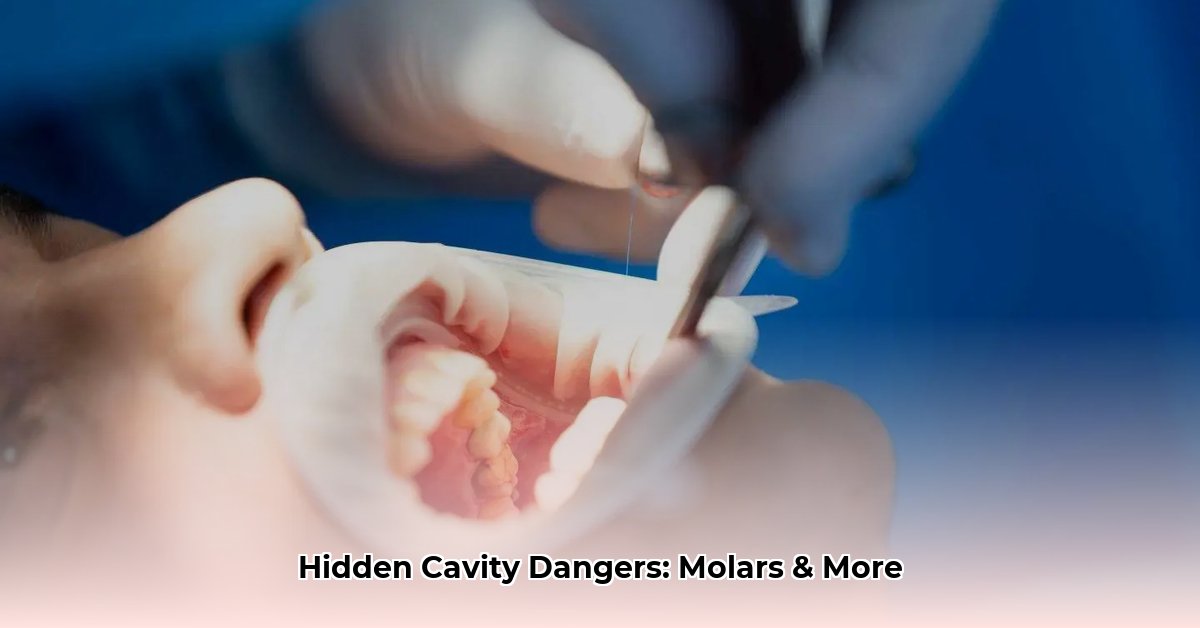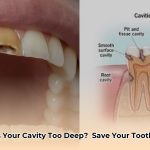Understanding Interproximal Cavities
Have you ever felt a nagging ache deep in your mouth, especially when biting down? It might be more than just food stuck between your teeth. It could be an interproximal cavity, a sneaky type of cavity that forms between your molars. These cavities are often difficult to detect on your own due to their hidden location. This guide provides comprehensive information about interproximal cavities, from causes and symptoms to treatment and prevention strategies.
What Causes Interproximal Cavities?
Several factors contribute to the development of cavities between molars:
- Trapped Food: The tight spaces between molars are ideal for trapping food particles, creating a feast for bacteria.
- Bacterial Activity: Bacteria in your mouth feed on trapped food, producing acids as a byproduct.
- Acid Attack: These acids gradually erode tooth enamel, the protective outer layer of your teeth. This process initiates decay.
- Difficult Cleaning: Reaching between molars with a standard toothbrush can be challenging. Without regular flossing or the use of interdental brushes, these areas become vulnerable to cavity formation.
Recognizing the Signs: Is it a Cavity?
Identifying an interproximal cavity can be difficult, as early-stage symptoms may be subtle or even non-existent. However, as the cavity progresses, you might experience:
| Symptom | Early Stage Possibilities | Later Stage Possibilities |
|---|---|---|
| Discomfort | Mild sensitivity to sweets, hot, or cold. | Pain when biting or chewing, especially with sweets, hot, or cold. |
| Appearance | Subtle white spots or lines (difficult to see). | Visible holes or pits; Brown or black discoloration. |
| Other Signs | Possibly no noticeable symptoms. | Persistent bad breath; Gum swelling or tenderness near the affected tooth. |
Diagnosing Interproximal Cavities
Dentists use a combination of methods to diagnose interproximal cavities:
- Visual Examination: Your dentist will visually inspect your teeth, looking for any signs of decay.
- Dental Explorer: A small, pointed instrument may be used to gently probe your teeth, checking for soft spots or stickiness that indicates decay.
- X-rays: Dental X-rays are essential for detecting interproximal cavities. They provide a clear view of the areas between your teeth, revealing cavities that are not visible during a visual exam.
Treatment Options: Restoring Your Smile
Treatment for interproximal cavities varies depending on the extent of the decay.
-
Remineralization: In the very early stages, fluoride treatments can help remineralize weakened enamel, potentially reversing the decay.
-
Fillings: For moderate decay, fillings are the most common treatment. Your dentist removes the decayed portion and fills the space with a composite resin (tooth-colored) or amalgam (silver) filling.
-
Crowns: If the cavity is extensive and a large portion of the tooth structure is affected, a crown might be necessary. A crown is a custom-made cap that covers the entire tooth, providing strength and restoring its shape.
-
Root Canal: If the decay reaches the pulp (the inner part of the tooth containing nerves and blood vessels), a root canal may be required. The infected pulp is removed, and the tooth is cleaned and sealed. A crown is often placed over the treated tooth for added protection.
-
Extraction: In severe cases, where the tooth is extensively damaged, extraction (removal) may be the only option. Missing teeth can be replaced with dental implants, bridges, or dentures.
Prevention Strategies: Protecting Your Molars
Preventing interproximal cavities is far easier than treating them. Here’s how:
1. Brushing Technique:
* Brush twice daily for two minutes with fluoride toothpaste.
* Angle your brush at a 45-degree angle to the gumline and use gentle, circular motions.
2. Floss Daily:
* Flossing is crucial for cleaning between your teeth where your toothbrush can’t reach.
* Gently guide the floss between your teeth, curving it around each tooth and sliding it up and down below the gum line.
3. Interdental Brushes:
* These small brushes are designed to clean between teeth, especially for those with wider spaces.
4. Water Flossing:
* A water flosser can be a helpful alternative to traditional floss, particularly for individuals with braces or those who find flossing difficult.
5. Diet:
* Limit sugary snacks and drinks, which feed cavity-causing bacteria.
* Choose nutritious foods that promote overall health, including oral health.
6. Regular Dental Checkups:
* Schedule professional cleanings and checkups at least every six months.
* Regular visits allow your dentist to detect and address potential problems early on.
* Discuss any concerns about interproximal cavities or other oral health issues with your dentist.
Finding a Dentist: Your Partner in Oral Health
Establishing a relationship with a trusted dentist is crucial for maintaining good oral hygiene. Ask for recommendations from friends or family or search online for dentists in your area. Don’t hesitate to inquire about their experience, treatment philosophy, and accepted insurance plans.
Frequently Asked Questions
-
What is the cost of treatment? The cost of treating interproximal cavities varies depending on the type of treatment needed, your location, and your dental insurance coverage. It’s always best to discuss treatment costs with your dentist before proceeding.
-
Does insurance cover treatment? Most dental insurance plans cover a portion of the cost of fillings, crowns, and root canals. However, coverage varies depending on your specific plan. Contact your insurance provider to understand your benefits.
By following these preventive measures and seeking professional dental care, you can effectively protect your molars from interproximal cavities and maintain a healthy, vibrant smile. Research in dentistry is constantly evolving, so talk to your dentist about the latest advancements and recommendations for optimal oral health.
- Wellness Fair Ideas for Work to Boost Employee Wellbeing - December 15, 2025
- Affordable Employee Wellness Fair Ideas for Any Budget - December 14, 2025
- Employee Wellness Programs Strategically Benefit Employee Health And Retention - December 13, 2025
















